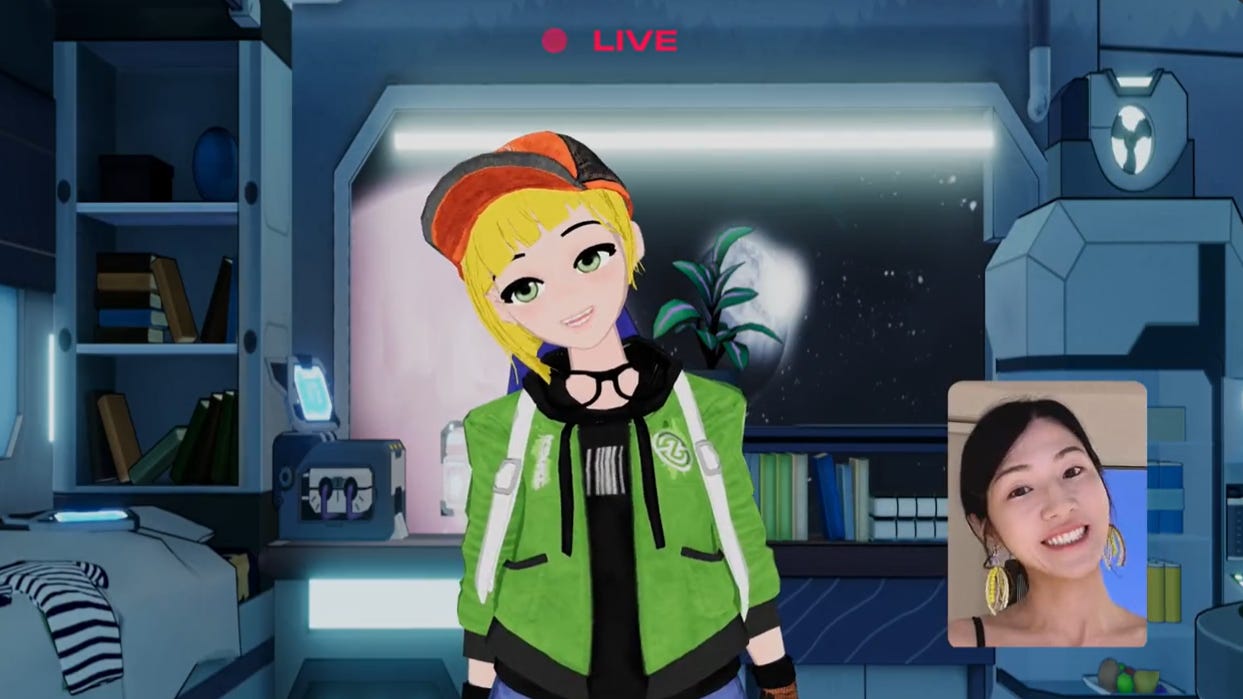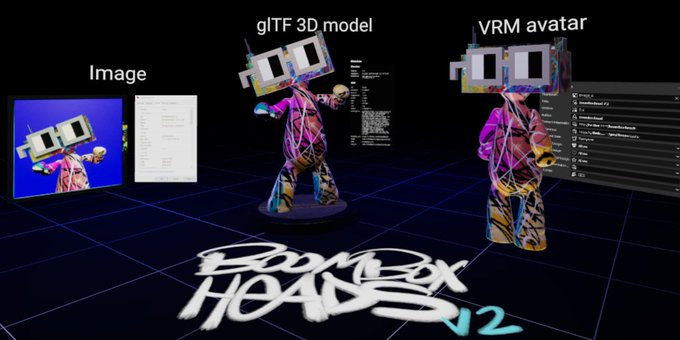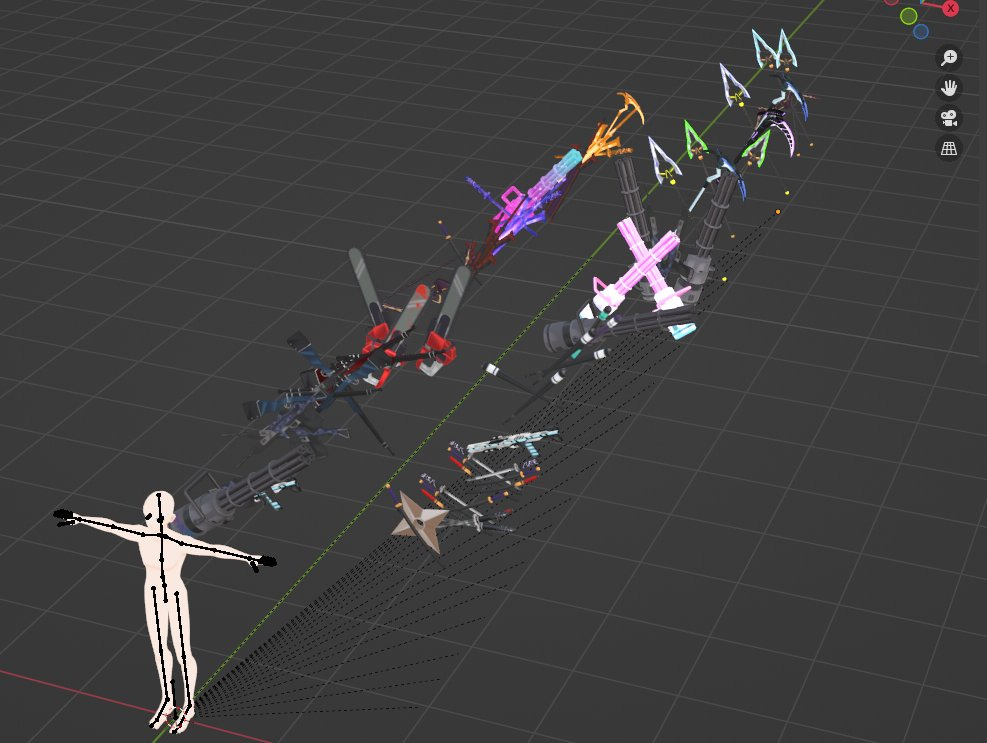✨ This post originally appeared in Metaversal on Bankless ✨
An open metaverse, while not yet realized, must stand on various pillars if it’s to succeed and thrive.
These pillars include freedom of expression, open interoperability, and strong privacy guarantees.
Something that’s beneficial in all three of these areas and shares a crossroads with NFTs? The VRM file format for 3D avatars.
I think VRM avatars will become a lot more popular in the future, and NFTs will become an increasingly common way to facilitate them, so let’s talk VRM x NFTs for today’s post!
-WMP
A Quick Guide to VRM Avatars and NFTs
The VRM 101
The Virtual Reality Modeling (VRM) file type is a format designed to facilitate humanoid character avatars. It’s built on the open 3D standard format glTF 2.0, ensuring cross-platform compatibility across everything from game engines to web apps.
Known for its efficiency, VRM compacts all its data, including textures and metadata, into a single file. It also defines standard motion capture operations so blinks, facial expressions, and beyond can be synced up with their IRL users.

First introduced in 2020, VRM has since become increasingly popular and used in tandem with other notable 3D platforms, e.g. the Unity game engine, to streamline the creation and distribution of “drag and drop” virtual reality avatars for games and metaverse projects.
The VRM x NFT crossroads
While the VRM file format was developed *outside *of the NFT ecosystem, its traction within the NFT space has been on the up and up over the past couple of years.
For example, Boomboxheads has helped pioneer “multi-format tokens,” i.e. NFTs who have associated VRM files directly infused in their metadata. This approach allows a game or virtual world to simply parse for the existence of an NFT to support its VRM avatar.

There are also projects who have made *complementary *VRM files for their NFT holders. While external and not directly connected to their associated NFTs onchain, these files can be downloaded and uploaded as users please into their platforms of choice.
For instance, AdWorld, Anata, Avastars, Blitmap Logos, Chain Runners, CloneX, CryptoAvatars, CyberBrokers, and Tubby Cats are all NFT collections who have seen team- or community-led work efforts around creating secondary VRM files for their holders.

Either way, though, the idea here of course is to make it possible to take your favorite digital collectibles and use them as avatars in your favorite digital spaces. Consider the case of the WIP Meetup, which meets weekly in different metaverse projects; thanks to VRM, take your characters with you wherever the event goes!
As these metaversal spaces continue to expand going forward, porting your chosen identity wherever you go and “unflattening” your NFTs into 3D characters via VRMs is poised to become more and more commonplace.
VRM-friendly web3 metaverse projects

The NFT space’s metaverse sector has seen VRM support become increasingly standard in recent times. Virtual world projects here that have added VRM support, or are in the process of doing so, include:
-
Decentraland — One of the oldest Ethereum-powered VR worlds, Decentraland recently added the ability to export your avatars as VRMs.
-
Holoworld — Built by the Hologram team, this in-progress virtual character customizer platform is compatible with AI and VRM.
-
Hyperfy — Arguably the most VRM-friendly web3 virtual world project.
-
Nifty Island — An open world social game, currently in closed alpha, that added VRM support this year.
-
OnCyber — A DIY web3 world builder project*.*
-
Upstreet — Born out of the Webaverse effort, the resurrected Upstreet is now one the more promising web3 VR worlds.
-
VIPE — A VRM marketplace and platform in operation since 2020.
-
Voxels — Another one of the longest-standing Ethereum VR worlds, Voxels (formerly Cryptovoxels) has VRM support on its list of to-dos*.*
What comes next?
The first wave of VRM intrigue has centered around 3D avatars. To be sure, that use case has tons of potential to grow as humanity moves more online over the next century. But there are other possibilities here too.
For instance, we may see the VRM and NFT combo used to facilitate marketplaces for AI-powered virtual pets, which you can bring along with you from one virtual realm to the next. The rise of VR headsets may make these digital pets feel increasingly real!
All that said, it’s a smart time to start paying attention to this area of metaverse building. And personally, everything I’ve learned from the crossroads of VRMs and NFTs has come from people like Jin and Boomboxhead and groups like M3, a virtual hackerspace community, so make sure you’re following folks like this if you want to stay plugged in here too!
Action steps
-
🌐 Try VRM-friendly projects: Explore Decentraland, Hyperfy, OnCyber, etc.
-
📚 Collect this post: Mint it on Mirror!
-
🎨 Catch up on my previous weekly roundup: NFTs in MoMA